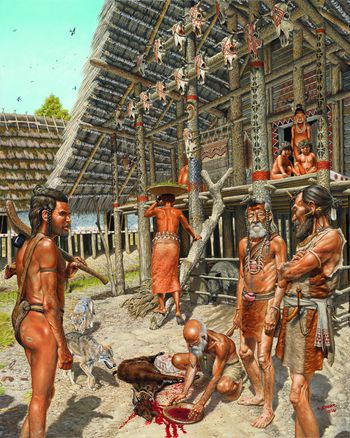Living Changes
Back to Square One
Sedentism, agriculture, population growth, settlement, possession, property, inheritance, hierarchy, dominance – strong keywords characterise the Neolithic era. In Central Germany, the fundamental step towards a sedentary, farming, and stockbreeding society took place around 7,500 to 7,000 years ago. Immigrants from the south-east European Danube region brought the new concept of life to central Europe. In their luggage they had revolutionary innovations such as seeds, livestock, house building, ceramics, textiles, and stone grinding, but also new ideas, customs, and beliefs.
The origin of this upheaval, known as ›neolithisation‹, can be found around 11,000 years ago in the Near East. The new way of life led to an increase in population, the people ultimately set out as pioneer farmers in search of new land and turned towards central Europe. The hunters and gatherers of central Europe, who had hitherto been indigenous to the region, mostly withdrew to northern regions, some of them adopting the new lifestyle much later.
The newcomers from the south-east laid the foundations for our current way of life: permanent settlements with massive longhouses were built near fields. Land was declared property and the first armed conflicts emerged. The great spiral of innovation and growth began to turn and reached a first climax in the 4th millennium BC.
Here you can find the film from the »Museum exklusiv« series of the State Museum of Prehistory »Die ersten Bauern« (German version only).






